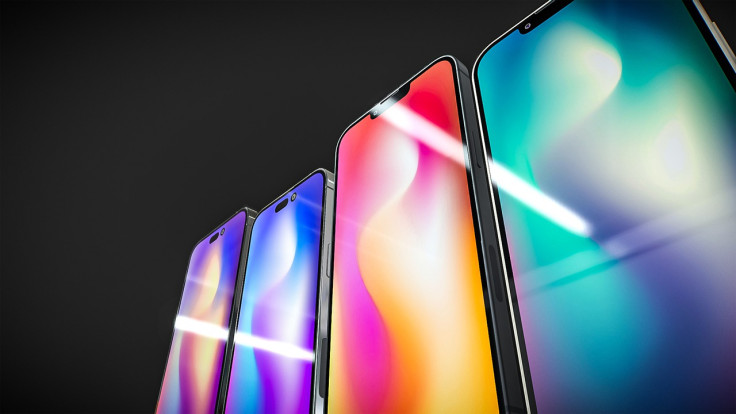iPhones with a scratch-resistant back panel tipped in a new patent
Apple has been granted a patent for Spatial Composites material by the US Patent and Trademark Office.

Scratch and abrasion-resistant Apple devices including iPhones, iPads, and MacBooks could be in the offing soon. This piece of vital information has been shared by Patently Apple, which is a blog that reviews Apple's latest Intellectual Property.
The U.S. Patent and Trademark Office recently granted the American tech giant a new patent for Spatial Composites material. This patent implies that next-gen Apple devices will likely come with an abrasion-resistant back panel that could be metal or glass.
It is no secret that steeply-priced Apple devices are also vulnerable to scratches. As a result, most Apple device owners end up using protective cases, which hide the device's appealing outward appearance. Apple is reportedly working on Spatial Composites that will let Apple fans use their devices without any cases.
No need to hide your Apple device's aesthetics
According to an earlier report, the Cupertino-based tech giant's iPhone 15 is on the verge of entering the mass production stage. Likewise, a myriad of other equally anticipated Apple devices are set to hit store shelves later this year. However, it is unclear whether Apple will limit this scratch-resistant back panel to its premium products.
The patent document suggests Apple will use abrasion-resistant materials to create a scratch-resistant rear panel. The folks at MySmartPrice believe the company could integrate these materials into the chassis of an iPhone to further strengthen the handset.
The US patent number 11,678,445 B2 sheds some light on the materials used to make smartphones and their scratch-resistant and electromagnetic shielding. Furthermore, the company points out that plastic, which doesn't block radio connectivity, is not scratch-resistant.
While metal is scratch-resistant, it interferes with radio connectivity. Ceramic is not only scratch-resistant but also supports connectivity. On the downside, ceramic isn't a robust material. According to the patent, Spatial Composites allude to a mixture comprising metal and ceramic. More importantly, it is scratch-resistant material with minimal interference and superior durability.
The patent indicates that the derived substrate material will have a mouldable matrix. Moreover, it implies these metals and ceramics are located between 10 and 100 microns apart. Apple currently adopts the Crystal Shield technology to protect the screen from scratches. Now, Spatial Composite will protect the rear panel as well.
How’s your iPhone held up? 🔧
— Michael (@NTFTWT) June 14, 2023
iPhone 14 Pro Max
-8 Months Old
-91% Battery Health
-Has seen the ground at least once pic.twitter.com/Pqk0WNQly1
As a result, recently purchased iPhones will not look beaten up as shown in photos tweeted by reviewer and developer Michael. However, it is worth noting that Apple has just patented the composite. So, the first iPhone with a Spatial Composite back panel isn't likely to see the light of the day anytime soon. While it may not come with this newfangled back panel, the upcoming iPhone 15 series is expected to boast some exciting features.
iPhone 15: What to expect?
While nothing is set in stone yet, the much-awaited iPhone 14 series successors have been subject to a lot of leaks lately. For instance, the next generation iPhone lineup is expected to bring a slew of notable upgrades over its predecessor in the photography department. According to an India Today report, the standard iPhone 15 models will house a 48MP rear-mounted camera.
To those unaware, the existing iPhone 14 Pro series features the same camera. So, this will be a major improvement over the 12MP cameras available on the existing standard iPhone models. However, the report claims Apple isn't likely to equip the standard models with a LiDAR or a telephoto lens for optical zoom.
📱 iPhone 15 Ultra prototype lit up
— Wow (@Sashabeliy501) June 9, 2023
Visually - more rounded frames, new design of the "Mute" switch and Type-C. pic.twitter.com/cn6wgffG0A
Apparently, the aforesaid enhancements will be limited to the higher-end models. In fact, the iPhone 15 Pro Max model will reportedly get an even better camera setup, It will probably comprise multiple sensors including 5-6x optical zoom-enabled periscope lenses. Aside from this, Apple is reportedly prepping to ditch the Lightning port in favour of a USB Type-C port this year.
So, it will be easier for people to charge their smartphones with the same USB-C charger that works with other devices. The word on the street is that Apple will unveil its new iPhones and other devices in September.
© Copyright IBTimes 2024. All rights reserved.






